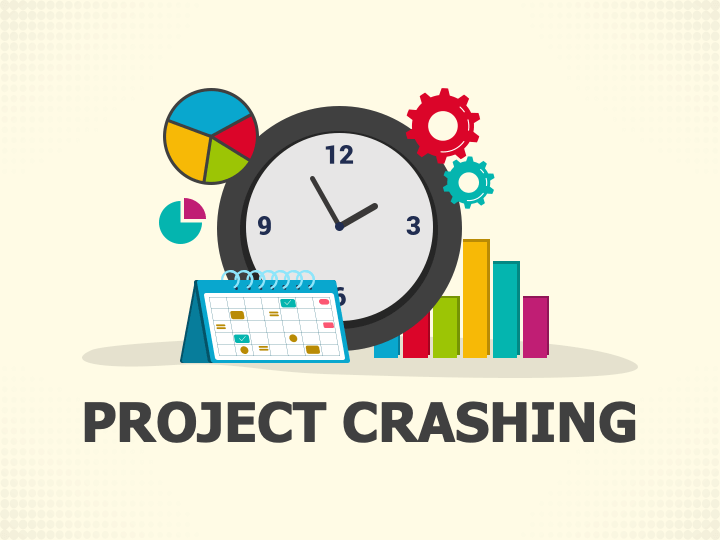Crashing in Project Management: Risks, Benefits, and Implementation
When you hear the term ‘crashing,’ it’s likely your mind jumps to images of vehicular accidents or the shattering sound of a dropped dish. Indeed, a crash can refer to an incident where a moving vehicle hits something, resulting in damage or destruction. But did you know that ‘crashing’ isn’t limited to physical scenarios? It’s also used to describe non-physical events that have a significant impact.
So, while ‘crashing’ might initially bring to mind scenes of chaos and destruction, it’s a term that carries varied meanings across different contexts. However, it also serves a specific meaning in project management. If you want to know what is crashing in project management, then our guide can help you. Read our article all the way through its conclusion and get every question answered.
What is Crashing in Project Management?

Crashing in a project is the practice of adding additional resources to tasks on the crucial path. Interestingly, you’re not changing the course of direction or tweaking deliverables. This enables you to meet those stringent deadlines without an extension in budget or amendments to the project specifications.
In line with the above explanation, if you have a deadline looming large, project crashing emerges as a productive move to ensure project completion on schedule, all while preserving the agreed deliverables. It’s an essential tool in the project management arena, aiding in the efficient management of schedules and resources and keeping projects on track to meet important deadlines.
Why is Crash Important in Project Management?
Now that you’ve understood what is crashing in project management, let’s dive into why you’d want to crash a project.
1. Meet Deadlines
The primary reason is to help meet those critical deadlines without blowing your budget. As a project manager, you always want to avoid project delays and stay on schedule. That’s where this technique comes into play.
2. Reduction of Duration
One of the benefits of project crashing is the potential reduction in project duration. Speeding up the timeline could lead to considerable cost savings, enhancing overall project results. It’s like stepping on the gas pedal of a car running low on time: you’re not changing the destination, just getting there faster.
3. Deployment of Additional Resources
It’s about the smart deployment of additional resources. It specifically targets tasks on the critical path, that is, the sequence of tasks that must be completed on time for the project to meet its deadline. Its focus is to optimize resource allocation to speed up project schedules or, putting it simply, to crash the project schedule while keeping the project’s predetermined targets intact. And yes, it does it without straining the budget or tinkering with the project specifications.
What are the Disadvantages of Crashing a Project?

While project crashing can expedite timelines and deliver results swiftly, it’s not without its pitfalls. Fully understanding what crashing a project entails is key, as it can sometimes do more harm than good.
1. Involves Additional Costs
One disadvantage of project crashing is that it often involves additional costs. Although this strategy can quickly complete tasks by adding resources, those resources aren’t free. It’s a cost-effective way to accelerate a project’s timeline when you need to, but the budget implications can be substantial.
2. Compromises Quality
Another issue is that project crashing can potentially compromise the quality of the delivered output. When you’re focused on speeding things up, there’s a risk that attention to detail might diminish or an error might slip through as time for quality control checks is often reduced.
3. Employee Burnout
Then there’s the matter of employee burnout. Accelerating project timelines typically means longer hours and more pressure on your team. Persistent high stress levels can lead to exhaustion, lowering productivity over time. It’s essential to consider this when determining if crashing a project is a viable solution.
How to Crash a Project?

In your project management journey, you’ve likely encountered the term project crashing. But what is crashing in project management? Well, it’s a strategic move designed to expedite project timelines while maintaining the project’s main objectives.
Clear understanding and strategic steps are required if you’re considering this for your project. Here are some stages to guide you on how to crash a project.
1. Look at the Critical Path
The critical path is an essential element to consider in project crashing. To figure out which tasks can be shortened for early completion, you need to analyze the critical path of your project. Locate the essential tasks, those forming the backbone of your project.
Some tasks on the critical path can’t be crashed – they’re independent and beyond your influence, like obtaining a building permit in a construction project.
2. Assess the Benefits and Drawbacks of Each Step
Every step in the project carries its own pros and cons. You need to evaluate these before making any decisions. Perhaps one significant advantage of project crashing is the expedited completion of the project, which could be crucial under demanding deadlines. Concurrently, a potential downside might be the strain on your budget due to added resources.
It’s crucial to identify these possible outcomes and weigh them against each other. This invaluable knowledge will guide the decisions on what steps to take.
3. Determine the Most Cost-Effective Option
In the light of tight budget constraints, make sure you’re considering the most cost-effective method. Evaluate the costs related to deploying more resources to specific tasks. Calculate and compare these costs before making a decision. Remember, unlike what is often seen with project crashing, cost-efficiency is key in decision-making.
It’s not always about throwing more resources at a task. Consider alternatives like fast-tracking, an approach that overlaps the completion of certain tasks, which in specific scenarios, might be a less costly option.
4. Outline the Budget and Updated Project Timeline
Your plan to crash a project should follow an updated budget and timeline. This updated shift in resources and schedule needs to be communicated clearly to the stakeholders. You need to, then, recalculate the tasks that can be done sooner with the least amount of strain on your budget.
The next step involves meeting with the project team, presenting your findings, and then brainstorming for more ways to streamline tasks and resources. With everyone on board, you’re one step closer to crashing your project successfully.
Example of Crashing in Project Management

In your journey to grasp what is crashing in project management, let’s explore an everyday example.
Let’s imagine for a moment you’re managing a high-stakes construction project with an approaching deadline that’s non-negotiable. Your projected timeline estimates another four weeks of work. Suddenly, stakeholders ramp up the pressure and need completion two weeks sooner. Amid the panic, you recall a project management term–project crashing.
- Choose The Critical Path:
To crash your project, you identify all activities on your critical path. These actions must occur sequentially, with no room for overlap. Your critical path might include stages like laying the foundation, framing the structure, installing electrical systems, and adding final finishing touches.
- Outline the Budget and Updated Project Timeline
To expedite your timeline, you might consider doubling electrician crews to decrease the ten-day installation to five. You might also consider employing an additional construction team to complete the framing faster. By adding resources–manpower in this instance–you’re taking steps towards achieving your new, challenging two-week deadline.
Conclusion
Crashing can be a vital tool in project management, especially when deadlines are tight. It’s all about identifying those critical path activities and piling on the resources to get things done faster. But remember, it’s not a decision to be taken lightly. While it can speed up your project, it can also hike up costs, stress your team, and potentially compromise quality. That’s why it’s crucial to weigh the risks before you dive in.
Frequently Asked Questions
Q1. What is crashing in project management?
Crashing in project management involves accelerating a project by assigning additional resources to critical path activities. This can help meet non-negotiable deadlines but may result in increased costs and pressure.
Q2. What are some potential risks of project crashing?
Crashing a project may lead to increased costs due to additional resources. Additionally, it may induce significant pressure on the team and possibly compromise on quality due to the rushed timeline.
Q3. What is a critical path in project management?
The critical path in project management is a sequence of tasks that must be completed on schedule for the project to finish on time. Delays in critical path tasks delay the entire project.
Q4. How can project crashing affect the timeline?
Project crashing accelerates the project timeline by adding resources to critical path activities, for example, employing additional teams or doubling up on crews.
Q5. Why is risk evaluation crucial before resorting to project crashing?
Evaluating risks before resorting to project crashing is essential to avoid unnecessary costs, reduce pressure on the team, and maintain the quality of the project. It ensures a mindful implementation and success even in challenging situations.

Leave a Reply